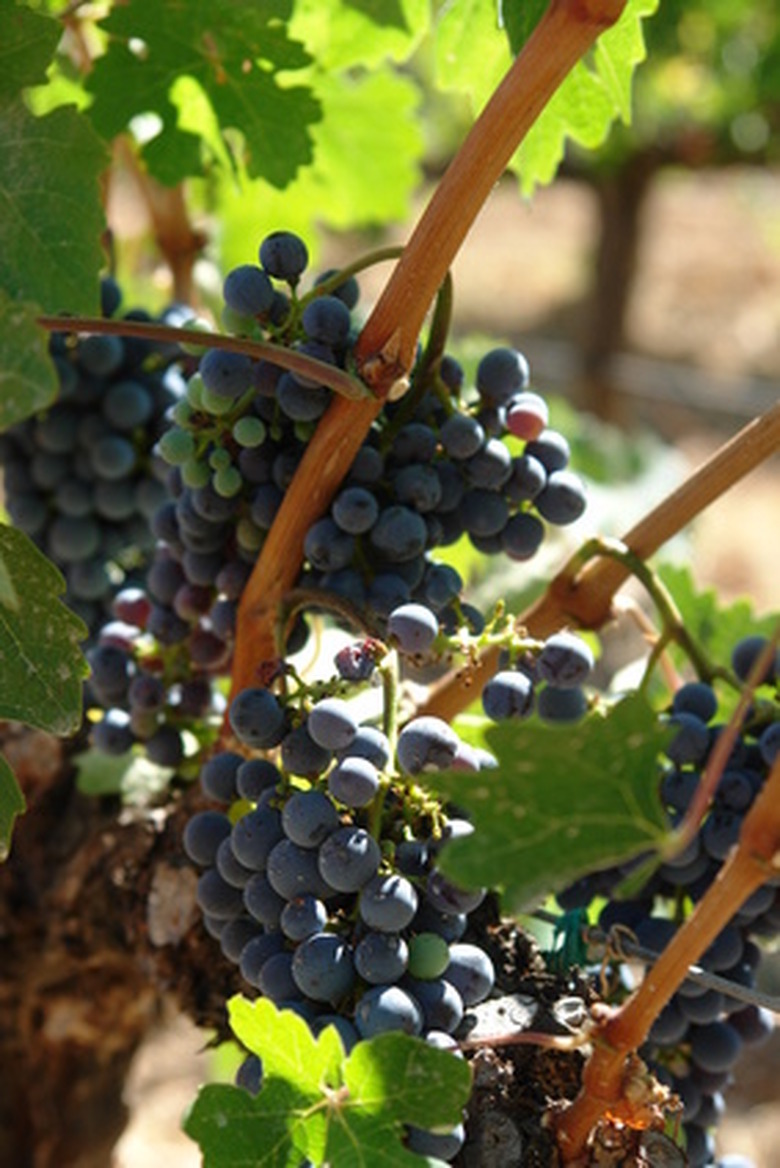How To Prune Grapevines In Florida
Florida gardeners can enjoy several types of muscadine grapes, a heat- and humidity-tolerant grape native to the southeastern United States. North and central Florida provide a better atmosphere for grapes than south Florida. Grapevines require extensive pruning to manage the size of the fruit crop and keep the vines healthy. Unpruned vines bear too much fruit and can tear down the trellis system. They also contract disease since they lack air circulation and light.
Step 1
Wait until the grapevine is dormant to prune. The University of Florida advises pruning grapevines from mid-January to mid-March, since pruning in early winter can cause winter damage if the vine isn't fully dormant.
- Florida gardeners can enjoy several types of muscadine grapes, a heat- and humidity-tolerant grape native to the southeastern United States.
- Unpruned vines bear too much fruit and can tear down the trellis system.
Step 2
Examine 1-year-old wood (last season's new growth) to identify the healthiest, strongest looking canes. The number of canes you want to keep depends on your trellising system: a four-arm trellis system needs four canes and a two-arm system needs two canes. Chose the canes to keep.
Step 3
Leave the canes you've selected. Then choose four shoots to be renewal canes and trim these back, leaving only two buds. Much of your new growth will emerge from these shoots.
Step 4
Remove the rest of the 1-year-old wood, since you don't want it to produce grapes. Expect to remove at least 80 percent of 1-year-old growth, advises Ohio State University.
- Examine 1-year-old wood (last season's new growth) to identify the healthiest, strongest looking canes.
- Then choose four shoots to be renewal canes and trim these back, leaving only two buds.
Step 5
Cut back any growth from the central shoot that climbs above your trellising system. You want to train the vine to grow up, not out.
Step 6
Clip off suckers that grow along the central vine or from the root stock. This poor-growth wood will not bear fruit and saps energy from the vine.
Cut Grapevines?
In cordon-trained grapes, woody canes called cordons grow horizontally from a thick, woody trunk to form a "T." The cordons are left in place from year to year, and canes grow from the cordons each spring. Canes left in place for one year grow shoots that yield grapes. As the selected canes begin growing in the spring, they are trained to grow horizontally on wires. These shoots, the ends of which should be the width of a pencil, are called spurs, hence the term spur pruning. These varieties, including Thompson seedless (V. vinifera "Thompson Seedless") are not trained to grow cordons. Growers prune all but two to four canes from a dormant woody trunk. If you prune eating grapes, the canes should have 50 to 80 buds.
- Cut back any growth from the central shoot that climbs above your trellising system.
- In cordon-trained grapes, woody canes called cordons grow horizontally from a thick, woody trunk to form a "T." The cordons are left in place from year to year, and canes grow from the cordons each spring.
Tip
The University of Florida recommends Black Beauty, Fry and Summit varieties for planting in that state.
References
- Ohio State University: Basic Principles of Pruning Backyard Grapevines
- University of West Virginia: Pruning Grapevines
- University of California Extension: Homeowner's Guide to Pruning Backyard Grapevines
- University of California Agriculture and Natural Resources: Pruning Grapevines
- Ohio State University Extension: Basic Principles of Pruning Backyard Grapevines
- Washington State University Extension: Grape Pruning Basics
- Texas A&M University: Pruning Grapevines
- University of California Extension: Reasons and Rules of Pruning Grapevines
- Old Farmer's Almanac: Grapes
